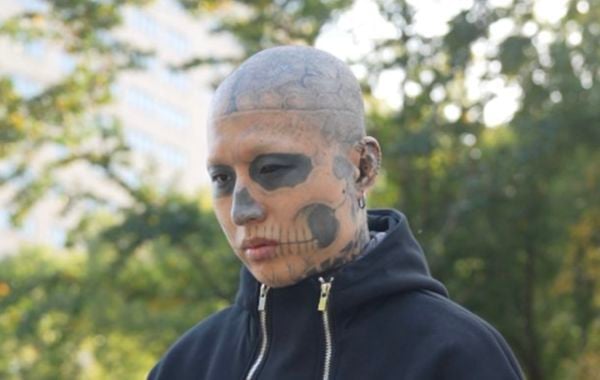Whale watching in Australia has never been the same since 28 June 1991, when an all-white humpback was photographed passing Byron Bay, the country’s most easterly point. It was the first time the world witnessed the existence of a real-life Moby Dick; never before had anyone heard of or seen a completely spotless white humpback whale anywhere else on Earth.
The incredibly rare creature was soon christened ‘Migaloo’, which is an indigenous Australian word meaning ‘white fella’. Since then, he has been spotted traveling up and down the east coast of Australia at least 50 times. As he migrates up from Antarctica to the warmer waters of Tropical North Queensland every year, his arrival is eagerly awaited by locals and tourists alike.
During this year’s migration in June, Australian photographer Ray Alley managed to capture a few stunning pictures of Migaloo off the coast of Nelson Bay in NSW. Alley had been trying to get images of the humpback for the past nine years and his hard work finally paid off. Migaloo stopped for a rare display of showmanship on his way through Nelson Bay, a moment that Alley describes as the ‘holy grail’ in his 27-year career.
Over the years, scientists have managed to gather several facts about Migaloo, who is now a celebrity in his own right. They estimate that he was around three to five years old when he was first spotted, making him 26 to 28 years old now. He may have another 50 years ahead of him, but scientists aren’t sure how long humpback whales live because they don’t have teeth (teeth are a way of measuring age in mammals, just like rings are for trees).
While both male and female humpbacks produce sounds, only males sing melodious tunes. Migaloo’s songs were first recorded in 1998, indicating that he might be male. Researchers were able to confirm his gender in 2004, after they collected sloughed skin samples from him and analysed them for DNA.
They also suspect that he is an albino whale, but without definitive evidence he is currently being called a ‘hypo-pigmented’ humpback. Albinism is a genetic disorder in which protein tyrosinase – which helps produce the pigment melanin – is completely absent or damaged by mutations. Fully albino people and animals have no melanin – they are white or pink all over, including their eyes. But even though Migaloo is all white, scientists are sceptical about his being an albino because he has brown eyes like other humpbacks. So instead, he is considered hypo-pigmented, which is a generic loss of skin color.
Besides Migaloo there are three other known white humpbacks in the world – Willow, Bahloo and MJ. Willow lives up in the Arctic and was spotted along the coast of Norway in 2012, but he isn’t all-white; he has black patterns on the underside of his tail. Bahloo was discovered in Migaloo’s territory in the Great Barrier reef in 2008 – he also has a few black spots on his head and tail, and isn’t as gregarious or friendly as the lovable Migaloo.
MJ (Migaloo Jr.), on the other hand, is a calf who was first seen swimming around the Great Barrier Reef in 2011. He is believed to 100 percent white as well, and suspected to be Migaloo’s child. But there isn’t any evidence to prove the fact, unless MJ’s DNA samples are collected someday and compared with Migaloo’s. So for now, Migaloo continues to be the world’s only documented white male humpback.
Earlier this year, reports suggested that the majestic white beast might be suffering from serious health problems because of his skin condition. Photographs of Migaloo taken off Cape Byron in June showed red spots on his dorsal fin, which indicated that he might be suffering from skin cancer. “Most people are curious as to whether or not this might be a preliminary form of skin cancer, but at this stage of course we simply can’t tell,” said said Professor Peter Harrison from Southern Cross University.
“It will be very interesting to see whether or not this redness has disappeared, or whether or not it has obviously become more inflamed which would indicate some sort of skin infection and I guess there is a possibility that it might be early stages of cancer as well,” he added. But he explained that the scratching and discoloration in the same area do indicate that Migaloo could have simply collided with something.
Migaloo is protected under Australian law, as a part of the Australian East Coast Humpback Whale population. He is also covered under a special Queensland & Commonwealth Government legislation that is enacted each year to protect him from harassment. All vessels, including jet-skis, are prohibited from approaching him closer than 500m and aircrafts cannot get lower than 2000 ft. The fine for breaching the law is $16,500.
Photos: Migaloo the White Whale/Facebook
Sources: Smithsoanian Magazine, Spirit Whale Watching









